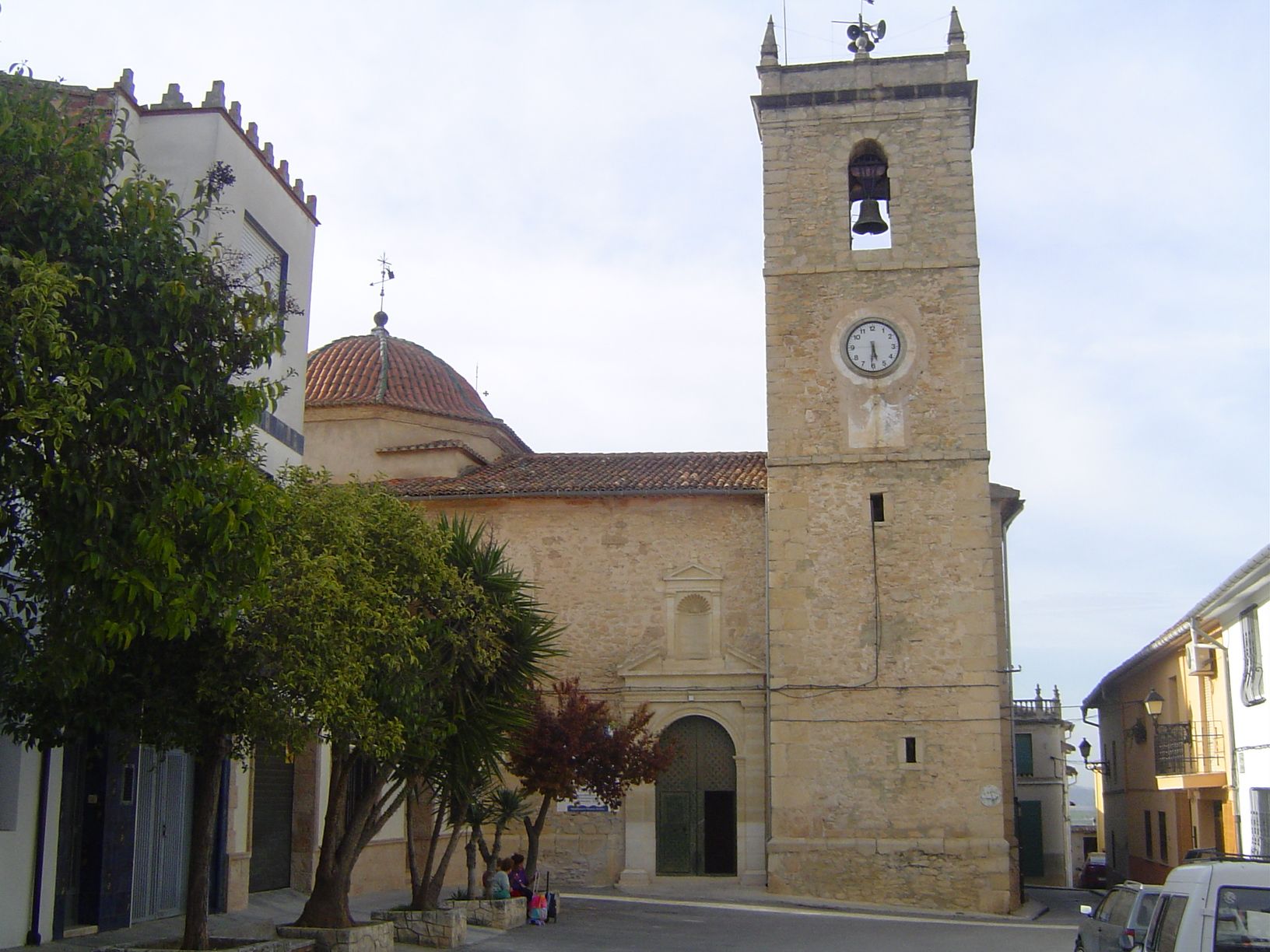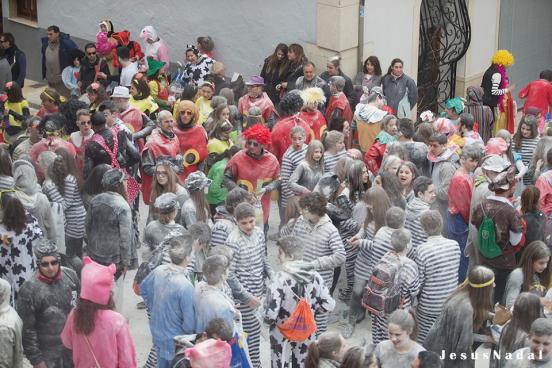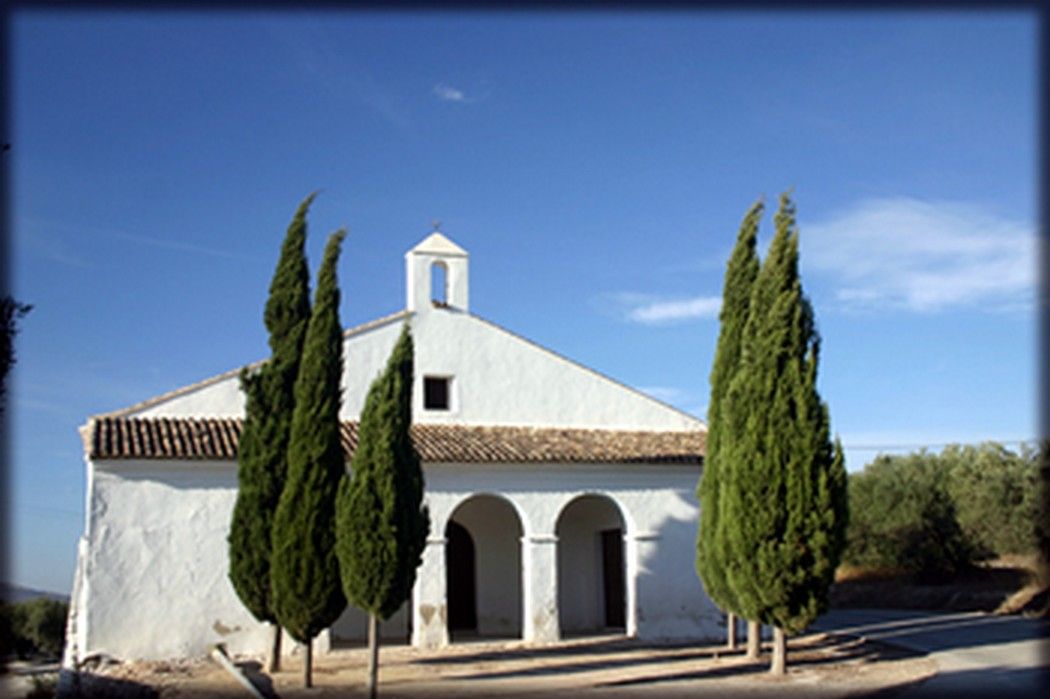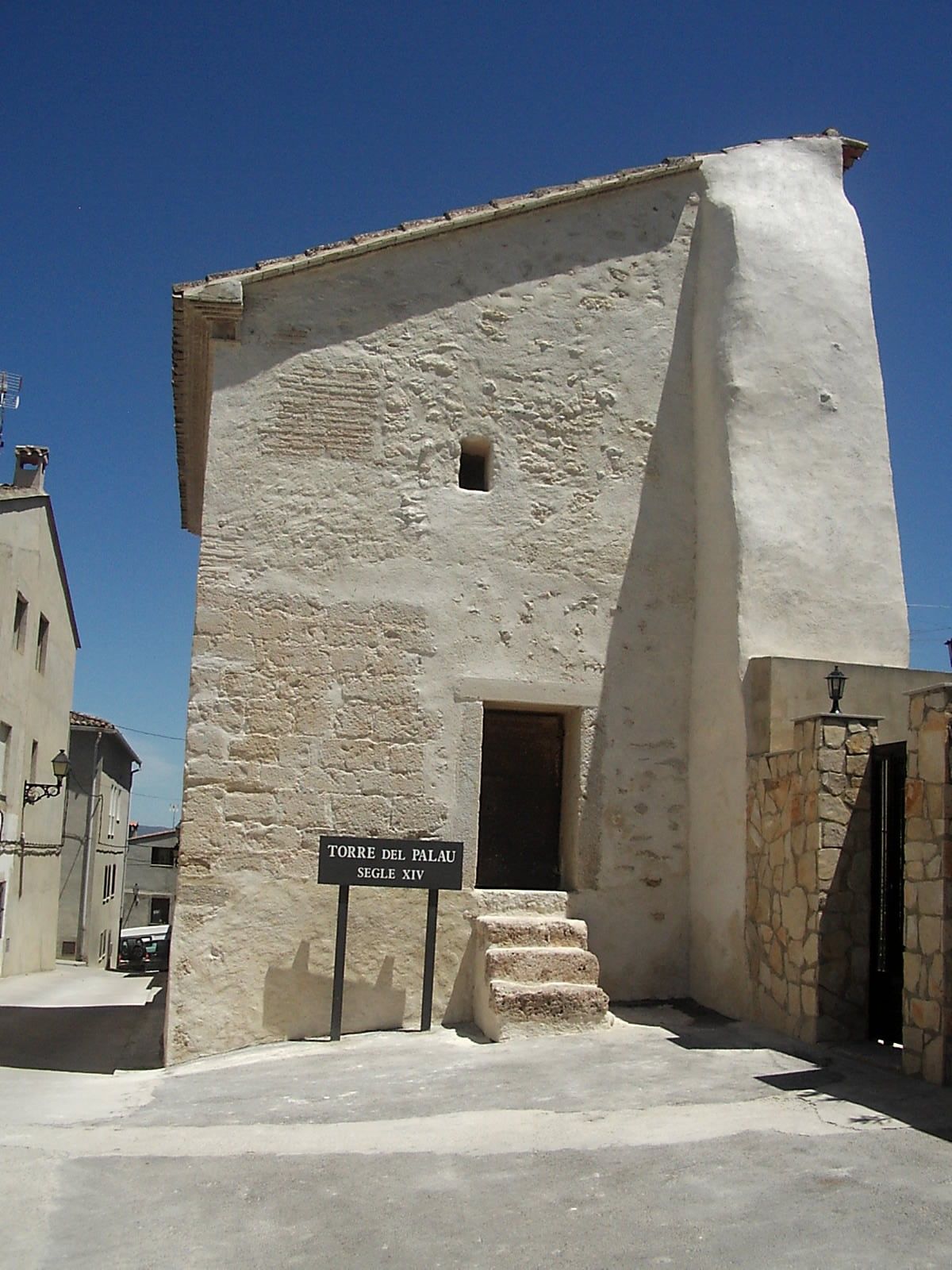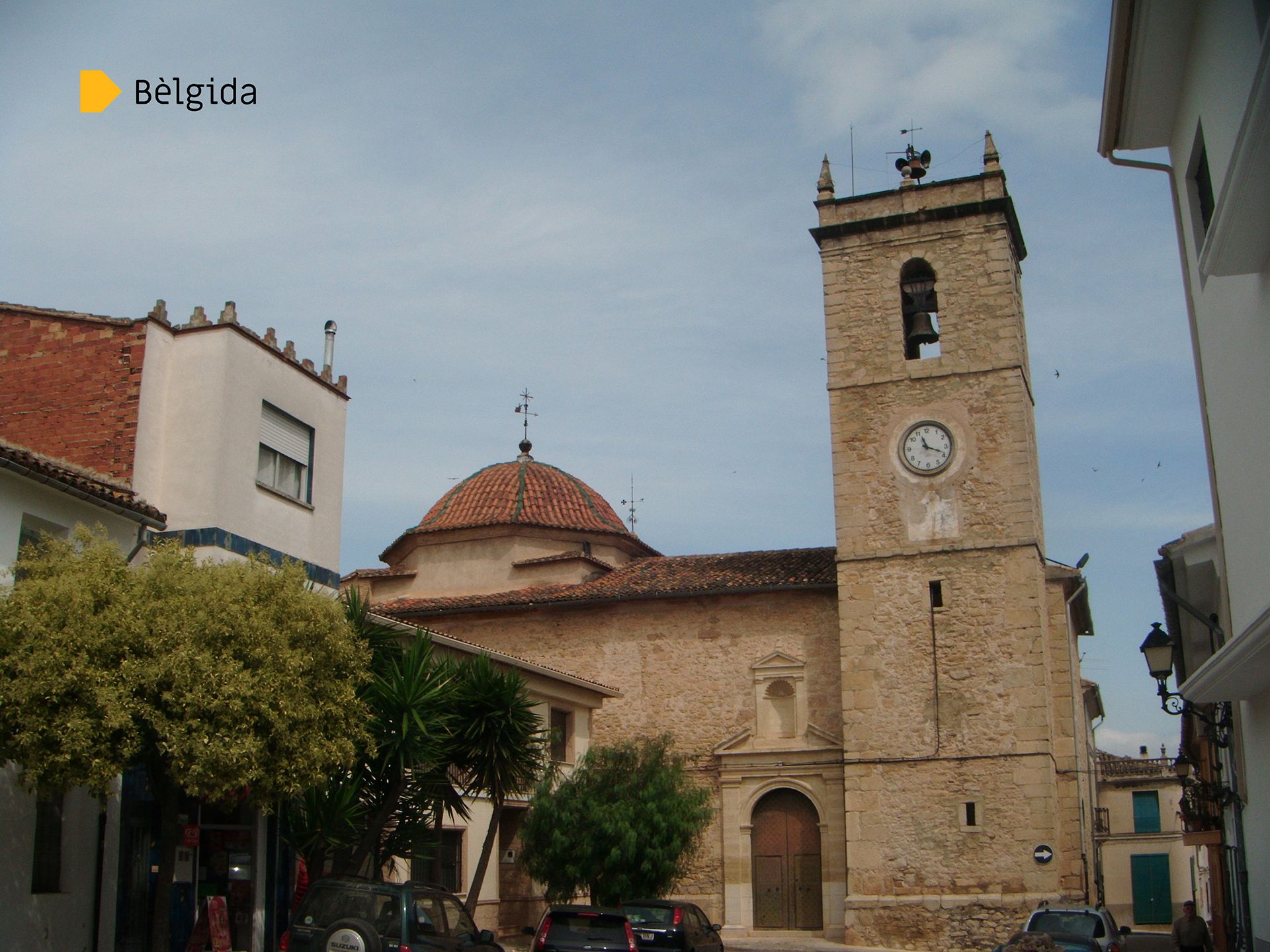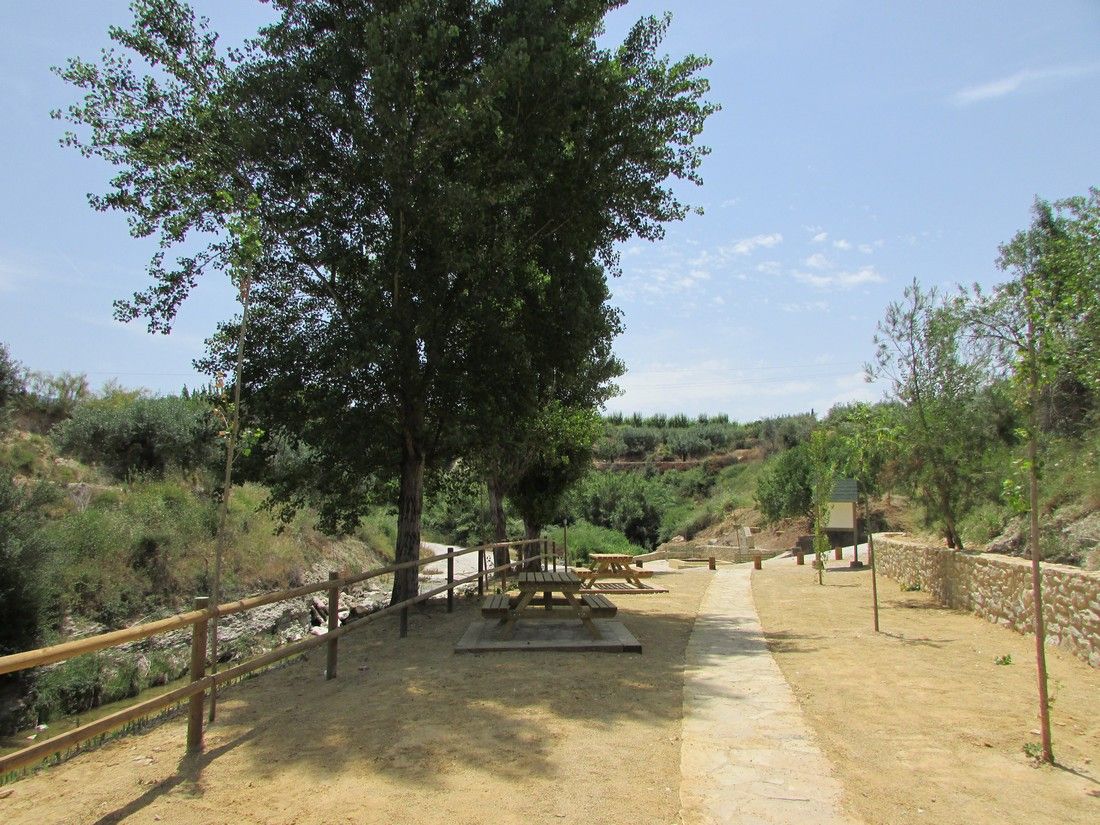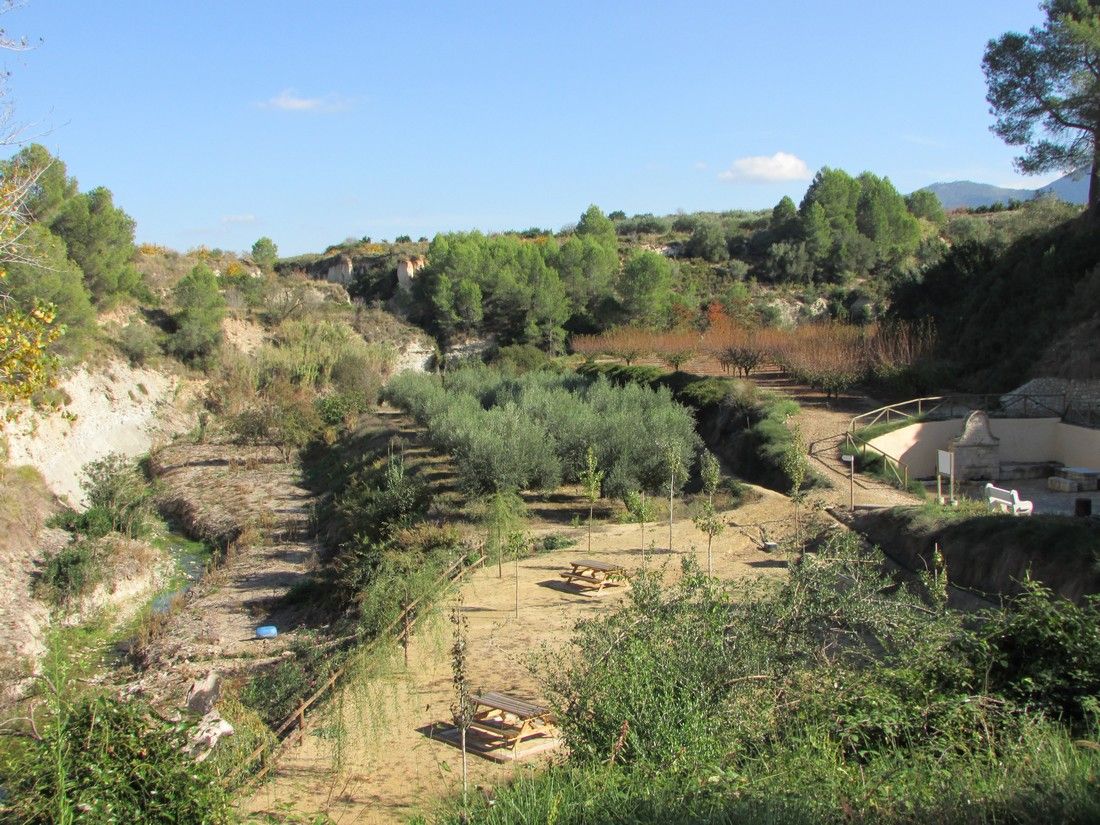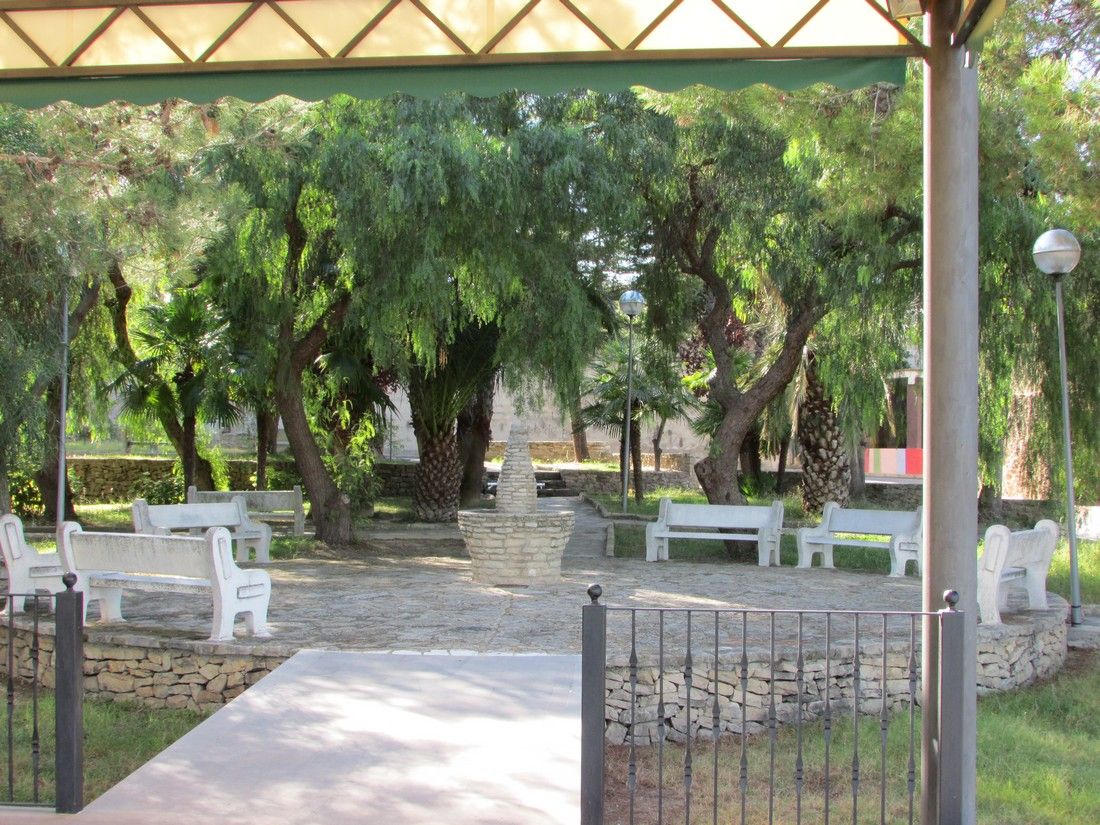Bèlgida
Located on the northern slopes of the Sierra de Benicadell range. The climate is mild. There is a predominance of dryland crops: grapes, olives and carob. Industrial activity is derived from agriculture: oil mills, wineries.
Gastronomy:
The local cuisine includes vegetable stew, vegetable soup, “arròs amb fesols i naps” (rice with beans and turnips), almond cake and olives in soda, among others.
Places of interest:
Parish Church of Saint Lawrence the Martyr
The present building dates from the late 17th century, although its decoration is Renaissance (of Tuscan influence on the façade). In the 16th century, the vestry was added, between 1602 and 1633 the Tabernacle, in 1659 the façade, and between 1777 and 1779 the Chapel of Ecce Homo. The church stands in the square in which the Palace of the Marquis was located. The high altar is Renaissance, with a wooden- two-piece altarpiece. Behind the high altar lies the sacristy and a small chapel, covered with a barrel vault, with four sections, perpendicular to the central nave, dating from the 18th century. The latter has Baroque décor, with baseboards and floors of Valencian tiles, also from the 18th century.
Hermitage of Saint Anthony the Abbott
Located 300 metres from the village, at the junction of the roads leading to Montaverner and Beniganim. It has a single nave with a barrel vault, lunettes and false windows, except one that lets light through and is located above the door. Although the license for the construction of the chapel was granted on 11th July, 1718, work was already well-advanced at the time of the parish visits of 1645 and 1658, although they were not completed until 28th July, 1721.
Tower of the Old Palace
Located in Calle Presó, on the corner with Plaza de la Iglesia. The Bellvís Palace was located in the upper part of the village, in a square in which the church was situated, and occupied a considerable area of land. The building had two towers, according to the oral tradition of the early 20th century, and its classification as a fortress suggests that there may have been four, forming a square. Today it still has its beautiful arched door, composed of large voussoirs, and it is still possible to admire some of the ogival arches in the windows and elements of the entrance and its Gothic rib vaults, the rosettes of which have lost some elements.
Don Mariano Jornet Perales Archaeological Museum
Archaeological museum dedicated to Mariano Perales Jornet, with pieces found in the municipality and which correspond to the Neolithic, Moorish and Iberian-Roman periods. It is located inside the Culture Centre and can be visited every working day from 16.00 to 18.00.
Hermitage of the Calvary
A simple, small rectangular building with a single room. It has a whitewashed facade, lintelled door and Arab-tile gabled roof, with sloping sides and a ridge perpendicular to the front. Inaugurated on 16th December, 1724.
Font Freda
The emblematic “Font Freda” is located in the Sierra de Benicadell range, in the municipality of Bèlgida. Renovated in 1904. A trail passes through old roads and gullies full of history, surrounded by ancient Muslim settlements, with springs and fountains … to the recreation area of “Font Freda”.
Festivities:
The municipality’s main festivities are dedicated to “Saint Lawrence the Martyr” and are held from the 9th to the 12th of August. They are attended by huge crowds, as they coincide with the holidays of most of the villagers and the people from the surrounding municipalities. They include cultural, sporting and religious events and dances.
However, the village’s most traditional festivity is “Carnival”: there are few villages with festivities celebrated with such enthusiasm. The Carnival was formerly centred around the well-known masquerades, the “enfarinà” and the “eixabegó”, but an event occurred in the early 19th nineteenth century that added a new attraction to the festivity: the “dance”. Its origin is retold as follows: at the beginning of the 19th century, cholera ravaged the population. Finding its prayers unanswered, the villagers decided to celebrate, once the plague had past, a festivity dedicated to Saint Raymond Nonnatus on the Sunday before Lent, and a dance within the following seven days. In order to perpetuate the celebration, thought turned as to how to cover its costs in the future. The town council agreed to set aside 20 pesetas for the religious festivity and 5 pesetas for the profane festivity, with any shortfall to be covered by taxes. During the festivities, drums and dulcimers are played in the village streets at dawn, midday and sunset. From Wednesday onwards, “l’enfarinà” takes place until midday. A fancy-dress party is held on Saturday afternoon, following a lunch of paella.
Festivities dedicated to “Saint Blaise” “Saint Anthony” and the “Saints Vincent” are held in the local neighbourhoods. They include cultural and religious events and bonfires.
